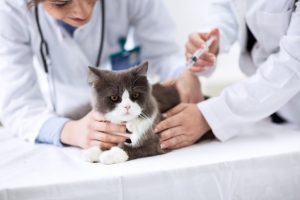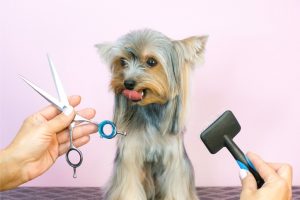
Obesity in pets has become a major issue. A study discovered that nearly half of all pets in the US are obese. If you go to your local dog park, you will likely see several obese dogs. Many pet owners are unaware that their pet is overweight. They believe that the greatest way to spoil and treat their pets is to feed them excessively without realizing that overfeeding might cause major health complications.
How to counter pet obesity?
Use these strategies found here to help your pet lose weight and stay in shape.
Count Calories
You can’t feed your pet if you don’t know how many calories it needs daily. And don’t trust the bag; feeding instructions are designed for active adult un-spayed or unneutered dogs and cats. If you give an older, spayed, or neutered indoor lap potato the recommended amount, you probably feed 20-30% too much. Ask a vet from LakeNormanAnimalHospital.com to calculate your pet’s daily calorie requirements.
Calculate Meals
A measuring cup is a pet parent’s best friend in the battle against Obesity. Some people just fill the dish or “guess” how much to feed. As a result of the “keep the dish full” feeding strategy, some pets, especially cats, are fed an “all-day buffet.” Giving indoor cats and small dogs ten more kibbles of food each day can add up to a pound of weight gain each year, according to the Association for Pet Obesity Prevention (APOP). Next, figure out how much food your pet requires per meal.
Tactical Treating
If you’re going to spoil your dogs, make it count. Too many pet treats are calorie explosions, loaded with sugar and fat, damaging our pets’ health. Pick low-calorie, sugar-free treats that are excellent for you. Always prefer goodies with only one component, like sweet potato, salmon, blueberry bites, or functional treats that help keep teeth clean or encourage movement.
Whatever you provide, remember to count the extra calories. It is common for pet owners to overfeed their pets by giving them small snacks throughout the day. Thirty more calories per day add up to three pounds in a year.
Exercise
Daily exercise is our best friend for a pain-free existence. Dog owners have an excuse-free exercise partner. Just 20-30 minutes of brisk walking can increase a dog’s immune system, improve cardiovascular health, and lessen several behavioral issues. For 5–15 minutes, play with a laser pointer, remote-controlled toy, or paper ball every day. Commit to daily walks with your dog, rain or shine. Walking is good for your health on both ends.
Reduce Carbs
Most pets that are obese don’t require a high-carbohydrate diet. But that’s what most of us give our pets. Looking at the food label, many diets contain 60% or more carbohydrates. It is advised that they have balanced protein and carbohydrate diets. Many Mooresville veterinary specialists recommend a high protein/low carb diet. Consult your veterinarian before changing your diet. Certain pets, such as those with kidney disease may require a special diet.
To Wrap It Up
Each of us is responsible for assisting our pets in maintaining a healthy weight. Just as you would never walk your dog without a collar and leash or let them eat only pizza and ice cream, pet owners are responsible for providing healthy, nutritional diets and treats and daily exercise. By following these easy tips, you may ensure that your pet’s finest and healthiest yet this year.









